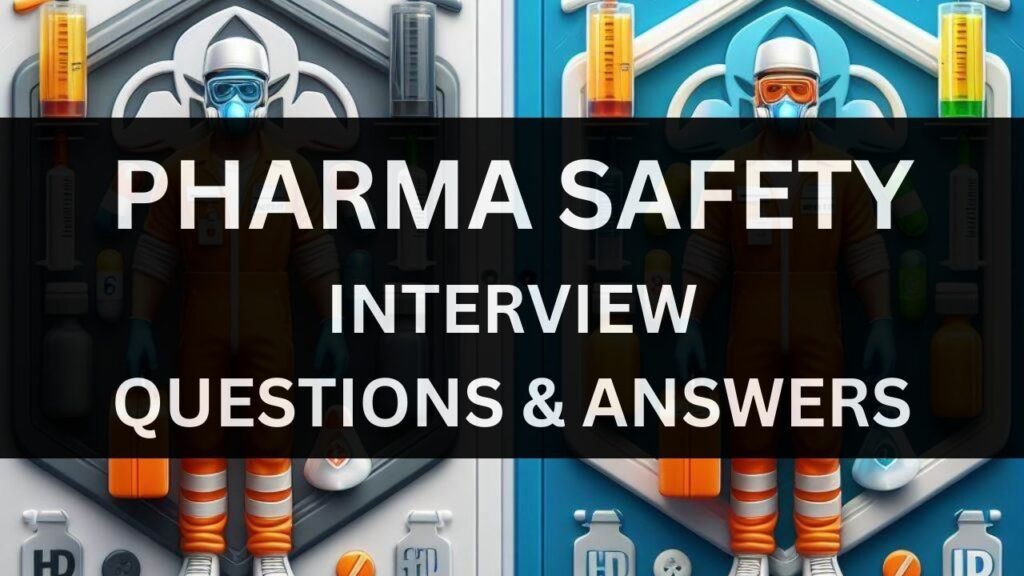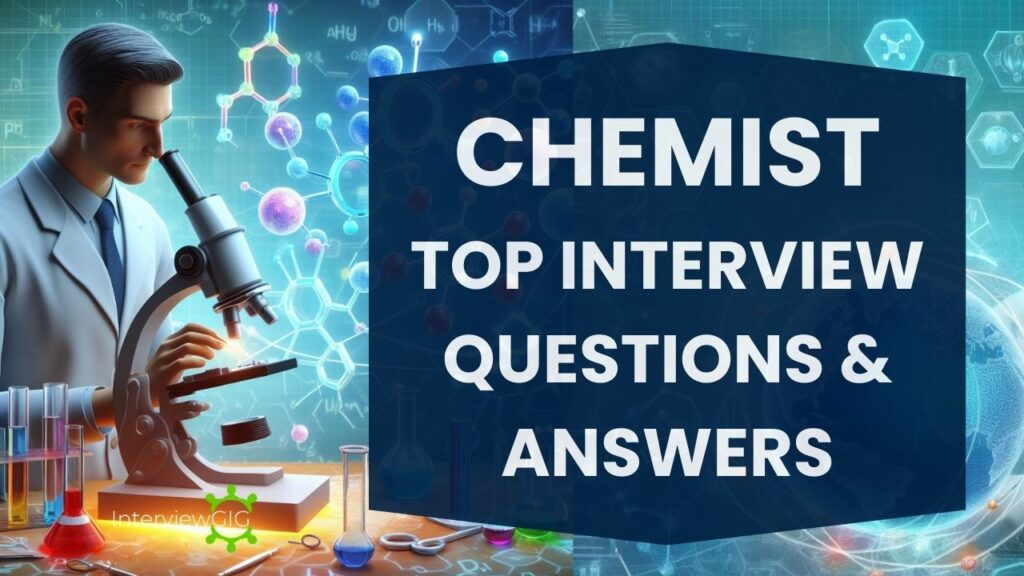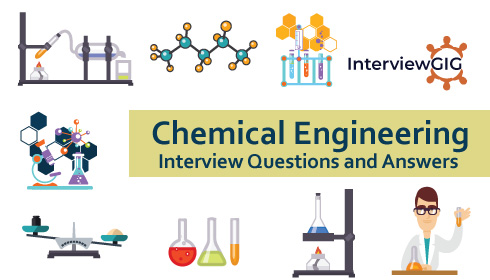High-Performance Liquid Chromatography (HPLC) and Gas Chromatography (GC) are cornerstone analytical techniques in laboratories across pharmaceuticals, chemicals, food safety, and environmental testing. Whether you’re a fresher stepping into your first lab role or an experienced professional aiming to advance your career, mastering these techniques—and being able to discuss them confidently in an interview—is essential. Interviewers often assess not just your technical knowledge, but also your problem-solving abilities, attention to detail, and real-world experience with troubleshooting and quality control.
In this blog, we’ll cover the most relevant HPLC and GC interview questions for both freshers and experienced candidates, complete with real-time examples and practical tips to help you stand out in your next interview.
Question: What is HPLC, and how does it work?
Answer: HPLC, or High-Performance Liquid Chromatography, is an advanced analytical technique used to separate, identify, and quantify components in a mixture. It works by injecting a liquid sample into a high-pressure system where a mobile phase (liquid solvent) carries the sample through a stationary phase (column packed with adsorbent material). As the sample passes through the column, its components separate based on their interactions with the stationary phase. The detector at the end records the signal for each component, allowing identification and quantification.
Example: In pharmaceutical labs, HPLC is commonly used to measure drug purity and detect impurities in formulations.
Question: Can you explain the difference between isocratic and gradient elution?
Answer: In HPLC, isocratic elution uses a constant mobile phase composition throughout the run. It’s ideal for simple sample mixtures with closely related retention times.
Gradient elution, on the other hand, gradually changes the mobile phase composition during the run. It’s useful for complex samples with components that vary significantly in polarity or retention time.
Example:
- In isocratic elution, a 70:30 methanol-to-water ratio may be used throughout the run.
- In gradient elution, the ratio may start at 30:70 (methanol-to-water) and gradually change to 90:10 for better separation of late-eluting peaks.
Question: What are the main components of an HPLC system?
Answer:
“The main components of an HPLC system include the following:
Solvent Reservoir: Holds the mobile phase.
Pump: Maintains consistent flow pressure.
Injector: Introduces the sample into the system.
Column: Packed with stationary phase material where separation occurs.
Detector: Identifies and measures the separated compounds (e.g., UV, PDA, or fluorescence detector).
Data System (Computer): Records and analyzes chromatograms for peak identification.
Example: In pharmaceutical analysis, a UV detector is commonly used to measure active ingredients in drugs.
Question: What are some common detectors used in HPLC?
Answer: The most commonly used HPLC detectors are:
- UV-Visible Detector: Ideal for compounds that absorb UV light, such as organic molecules.
- PDA (Photodiode Array) Detector: Provides full-spectrum data for improved peak identification.
- Fluorescence Detector: Highly sensitive for detecting fluorescent compounds.
- Refractive Index (RI) Detector: Suitable for compounds with little or no UV absorbance.
Example: For vitamin analysis in food samples, a fluorescence detector is often preferred due to its high sensitivity.
Question: How do you select the appropriate mobile phase for HPLC?
Answer: Selecting the appropriate mobile phase for HPLC involves considering several factors, including the nature of the analytes, the stationary phase, and the desired separation. I typically start by assessing the polarity of the compounds; for example, if I’m working with polar analytes, I might choose a polar solvent like water or methanol. I also consider the pH of the mobile phase, as it can affect the ionization state of the analytes. Additionally, I may perform preliminary tests using different solvent mixtures to determine which combination provides the best resolution and peak shape for my specific application. Ultimately, the goal is to achieve optimal separation while maintaining good reproducibility and sensitivity.”
Question: What are the key considerations when developing an HPLC method?
Answer: Focus on:
- Sample Characteristics (e.g., polarity, solubility)
- Column Selection (e.g., C18 for non-polar compounds)
- Mobile Phase Composition (buffer type, pH)
- Flow Rate & Temperature (for peak resolution)
- Detection Method (UV, PDA, etc.)
Example: Developing a method for paracetamol in tablet formulations may require a C18 column with a 0.1% formic acid-acetonitrile mobile phase.
Question: If you observe ghost peaks during HPLC analysis, what steps would you take to resolve it?
To resolve ghost peaks, I would first
Answer: Run blank injections to identify contamination.
Flush the system with strong solvents.
Replace contaminated vials or mobile phase.
Example: If ghost peaks appear in a method for analyzing a drug, cleaning the system and ensuring proper sample preparation can eliminate these unwanted signals.
Question: How would you handle a sudden increase in backpressure during HPLC analysis?
Answer: Point to blockages as the primary reason and suggest stopping the pump and checking for obstructions.
Example: In a routine analysis of a complex mixture, if backpressure spikes, replacing the inline filter can often resolve the issue.
Question: How do you troubleshoot a baseline noise issue in HPLC?
Answer: To troubleshoot baseline noise, I would check for electronic interference, ensure proper grounding, and verify that the mobile phase is free from bubbles.
Example: In a method for detecting trace impurities, reducing baseline noise is crucial for accurate quantification.
Question: What is retention time and what factors affect it?
Answer: Retention time is the time taken for a compound to reach the detector. It depends on:
- Column Type (e.g., particle size)
- Mobile Phase Composition
- Flow Rate & Temperature
Example: Increasing acetonitrile in the mobile phase shortens retention time in fat-soluble vitamin analysis.
Question: How do you prepare samples for HPLC analysis?
Answer:
Sample Preparation Steps:
- Filtration: Filter the sample through a 0.22 µm or 0.45 µm membrane filter to remove particulates.
- Dilution: Dilute the sample with a suitable solvent for better solubility and peak response.
- pH Adjustment: Adjust pH to improve stability and peak shape.
- Sonication: Use ultrasonic waves to dissolve insoluble components.
- Centrifugation: For biological samples, centrifugation removes solid residues.
Example: For analyzing aspirin in tablets, dissolving the sample in methanol followed by filtration ensures clear injection and accurate results.
Question: What are the differences between normal phase and reverse phase chromatography?
Answer:
| Aspect | Normal Phase | Reverse Phase |
| Stationary Phase | Polar (e.g., silica) | Non-polar (e.g., C18) |
| Mobile Phase | Non-polar (e.g., hexane) | Polar (e.g., water/methanol) |
| Retention Behavior | Polar compounds retained longer | Non-polar compounds retained longer |
| Usage | Suitable for lipids and oils | Common in pharmaceutical and biological analysis |
Example: Reverse phase HPLC is widely used for drug analysis due to its versatility and better peak resolution.
Question: What are the differences between GC and HPLC?
Answer:
- GC is ideal for analysing gasoline samples or alcohol content in beverages.
- HPLC is preferred for testing pharmaceutical tablets, antibiotics, or complex drug formulations.
Both techniques are widely used in industries like pharmaceuticals, food testing, and environmental analysis.
| Aspect | GC | HPLC |
| Mobile Phase | Inert gas (e.g., Helium) | Liquid (e.g., Water, Methanol) |
| Sample Type | Volatile & thermally stable | Non-volatile & thermally unstable |
| Temperature | High temperatures (up to 400°C) | Room temperature or slightly elevated |
| Speed | Faster analysis | Slower analysis |
| Best For | Gases, VOCs, oils | Drugs, proteins, biological samples |
Here are the key differences between Gas Chromatography (GC) and High-Performance Liquid Chromatography (HPLC):
| Feature | Gas Chromatography (GC) | High-Performance Liquid Chromatography (HPLC) |
| Mobile Phase | Gas (inert gas like Helium, Nitrogen, or Hydrogen) | Liquid (single solvent or a mixture of solvents) |
| Analyte State | Analytes must be volatile and thermally stable. | Analytes can be non-volatile or thermally labile. |
| Separation Mechanism | Based on differences in boiling points and interactions with the stationary phase. | Based on differences in interactions with the stationary and mobile phases (polarity, size, charge, etc.). |
| Stationary Phase | Can be a solid or a liquid coated on an inert support. | Solid particles or a liquid bonded to a solid support. |
| Operating Temperature | Typically operated at high temperatures to vaporize the analytes. | Can be operated at room temperature or slightly elevated temperatures. |
| Typical Analytes | Small, volatile organic compounds, gases, hydrocarbons. | Wide range of compounds including pharmaceuticals, proteins, peptides, polymers, carbohydrates, and inorganic ions. |
| Detection | Commonly uses Flame Ionization Detector (FID), Thermal Conductivity Detector (TCD), Mass Spectrometer (MS). | Commonly uses UV-Vis detectors, Diode Array Detectors (DAD), Fluorescence detectors, Electrochemical detectors, Mass Spectrometer (MS). |
| Sample Preparation | Often requires simple sample preparation like dissolving in a volatile solvent. Derivatization may be needed for some analytes. | Can require more complex sample preparation steps like extraction, filtration, or derivatization. |
| Applications | Analysis of petroleum products, environmental samples (volatile organic compounds), forensic analysis, food aroma analysis. | Analysis of pharmaceuticals, biological samples, food and beverage components, polymers, environmental pollutants (non-volatile). |
| Polarity of Mobile Phase | Non-polar (typically) | Can be polar or non-polar depending on the separation mode (e.g., reversed-phase HPLC uses a non-polar stationary phase and a polar mobile phase). |
In summary:
- GC is best suited for separating volatile and thermally stable compounds using a gaseous mobile phase.
- HPLC is more versatile and can handle a wider range of compounds, including non-volatile and thermally labile substances, using a liquid mobile phase.
Question: How do you handle and dispose of hazardous waste in the lab?
Answer:
- Segregate Waste: Separate organic solvents, acids, and bases.
- Label Containers: Clearly mark hazardous waste containers.
- Neutralize Acids/Bases: Safely neutralize before disposal if required.
- Follow SOPs: Adhere to lab safety protocols and use PPE.
- Waste Disposal Services: Coordinate with certified waste disposal agencies.
Example: I label used solvents like acetonitrile and methanol and store them in designated containers for disposal.
Question: Describe your experience with software used for HPLC data analysis.
Answer: I have experience with software like:
- Empower (for data acquisition and peak integration)
- Chromeleon (for automated reporting and compliance)
- OpenLab (for secure data storage and analysis)
Example: Using Empower, I efficiently analyze peak areas, retention times, and system suitability data.
Question: What are the regulatory requirements for HPLC in pharmaceutical analysis?
Answer: Key requirements include:
- USP/EP/JP Guidelines
- ICH Q2(R1) for method validation (accuracy, precision, specificity)
- 21 CFR Part 11 for electronic records compliance
Example: I ensure all HPLC data follows ICH Q2(R1) standards during drug stability testing.
Question: Can you explain the concept of peak purity in HPLC?
Answer: Peak purity refers to the assurance that a single chromatographic peak represents only one chemical entity (the analyte of interest) and not co-eluting impurities or degradation products. It’s often assessed using a diode array detector (DAD) by comparing UV-Vis spectra across the peak or with mass spectrometry (MS) by observing a single mass ion.
Question: How do you perform system suitability tests in HPLC?
Answer: System suitability tests are performed before sample analysis to ensure the HPLC system is performing adequately. This involves injecting a standard solution multiple times and evaluating parameters like resolution between critical peaks, tailing factor, plate count (efficiency), and reproducibility of retention times and peak areas against predefined acceptance criteria.
Question: How do you perform HPLC method validation?
Answer: HPLC method validation involves assessing parameters such as specificity, accuracy, precision, linearity, and robustness. For example, to validate a method for analyzing a pharmaceutical compound, I would prepare standard solutions at various concentrations (e.g., 10, 50, and 100 µg/mL), run them through the HPLC, and evaluate the linearity by plotting the response against concentration. If the correlation coefficient (R²) is greater than 0.99, the method is considered linear and validated for that concentration range.
Question: What is system suitability testing in HPLC?
Answer: System suitability testing (SST) ensures that the HPLC system is functioning correctly before analysis. It includes checks for resolution, repeatability, and baseline stability. For instance, I would run a standard solution of a known compound and confirm a resolution of 1.5 or greater between two closely eluting peaks. If the relative standard deviation (RSD) of the peak area from multiple injections is less than 2%, the system is deemed suitable for analysis.
Key parameters include:
- Resolution (Rs ≥ 2)
- Theoretical Plates (N ≥ 2000)
- Tailing Factor (T ≤ 2)
- Retention Time Repeatability (≤ 2% RSD)
Question: How do you select the appropriate wavelength for UV detection?
Answer: Select the wavelength where the analyte absorbs the most light (λmax) by reviewing its UV-Vis spectrum to maximize sensitivity. Avoid wavelengths where mobile phase components strongly absorb. Example: Choosing 254 nm because a drug shows maximum absorbance at that wavelength.
Question: How would you troubleshoot issues related to the pump, injector, column, or detector?
Answer:
- Pump Issues: Check for leaks, air bubbles, or degas solvents.
- Injector Issues: Clean or replace injector seals if sample volume inconsistencies occur.
- Column Issues: Flush with strong solvents or replace if peaks tail or broaden.
- Detector Issues: Clean the flow cell and recalibrate the detector.
Example: I resolved pressure spikes by flushing the column with methanol to remove salt deposits.
Question: How do you identify and resolve ghost peaks in a chromatogram?
Answer: Ghost peaks can be identified as unexpected, small peaks in the chromatogram. To resolve them, I would first run a blank sample to check for contamination in the mobile phase. For example, if I observe ghost peaks in a chromatogram of a drug sample, I would run a blank with the same mobile phase. If ghost peaks persist, I would clean the system and ensure proper sample preparation, such as using fresh solvents and properly filtering samples to eliminate any particulate contamination.
Question: What steps would you take if you observe low resolution between two peaks?
Answer:
- Adjust Mobile Phase Composition: Increase the organic solvent for better separation.
- Change Column Temperature: Increasing temperature can improve peak shape and resolution.
- Modify Flow Rate: Reducing flow rate often improves resolution.
- Select a Different Column: Using a column with smaller particle size or different phase chemistry can enhance separation.
Example: I improved peak resolution between two aspirin impurities by adjusting the acetonitrile ratio in the mobile phase.
Question: If your sample shows inconsistent retention times, how would you troubleshoot the issue?
Answer:
- Check Mobile Phase Preparation: Ensure correct solvent ratios and degas the solution.
- Inspect Column Conditioning: Re-equilibrate the column after changing mobile phase conditions.
- Examine Pump Performance: Ensure stable flow rate and check for leaks.
- Monitor Temperature Control: Fluctuations can impact retention times.
Example: I resolved retention time drift by stabilizing the column oven temperature at 30°C.
Question: What steps would you take if your HPLC system shows high noise in the baseline?
Answer:
- Filter Mobile Phase and Sample: Removes particulate contamination.
- Replace Contaminated Solvents: Use fresh solvents to prevent noise.
- Flush the System: Clean the column, injector, and flow cell.
- Check Detector Settings: Ensure wavelength and bandwidth are optimized.
Example: I reduced noise by cleaning the flow cell and replacing the aged mobile phase.
Question: Can you explain a situation where you improved an HPLC method’s efficiency or accuracy in your previous role?
Answer: In a previous role, we had a method with long run times. By carefully optimizing the gradient elution program and slightly increasing the flow rate, we managed to reduce the analysis time by 20% without compromising the resolution or accuracy of the results.
GC
Question: What are the main components of a GC system?
Answer:
- Carrier Gas Supply: Provides an inert gas (e.g., helium, nitrogen) to transport the sample.
- Injector: Introduces the sample into the column.
- Column (in Oven): Separates compounds based on boiling points.
- Detector: Identifies and quantifies analytes (e.g., FID, TCD).
- Data System: Captures and processes chromatographic data.
Example: I used a GC-FID system to analyze volatile organic compounds in pharmaceutical samples.
Question: What types of detectors are commonly used in GC?
Answer:
- Flame Ionization Detector (FID): Best for detecting hydrocarbons.
- Thermal Conductivity Detector (TCD): Ideal for inorganic gases.
- Electron Capture Detector (ECD): Suitable for halogenated compounds.
- Mass Spectrometer (MS): Provides detailed structural information for complex samples.
Example: I used an FID for analyzing essential oils due to its high sensitivity to organic compounds.
Question: What is the purpose of the carrier gas in GC?
Answer:
The carrier gas transports the sample through the column. It must be:
- Inert (e.g., helium, nitrogen) to avoid reactions.
- Pure to ensure stable baseline and reduce noise.
Example: I used helium in a GC-MS system for optimal peak resolution and sensitivity.
Question: How is temperature programming used in GC?
Answer: Temperature programming involves increasing the oven temperature over time during a GC run. This is used to optimize the separation of complex mixtures containing compounds with a wide range of boiling points. Lower temperatures initially improve resolution of volatile compounds, while higher temperatures elute less volatile components.
Example: Starting at 50°C and ramping to 250°C can help separate closely eluting compounds in a complex mixture.
Question: What is the purpose of a split/splitless injector in GC?
Answer: The split/splitless injector controls the amount of sample introduced into the column. The split mode allows only a portion of the sample to enter, reducing overload, while splitless mode introduces the entire sample for trace analysis.
Example: For trace analysis of pesticides, a splitless injector ensures maximum sensitivity.
Question: If you observe ghost peaks during GC analysis, how would you troubleshoot them?
Answer:
- Check Blank Injections: Identify contamination from solvents or vials.
- Clean the Injector Liner and Septum: Residual compounds may cause ghost peaks.
- Use Fresh Carrier Gas and Columns: Old supplies may degrade and introduce contaminants.
Example: I eliminated ghost peaks by replacing the inlet liner and using freshly prepared solvents.
Question: What steps would you take if your GC peaks show poor resolution?
Answer:
- Optimize Temperature Program: Slower temperature ramping improves separation.
- Reduce Carrier Gas Flow Rate: Provides better interaction with the stationary phase.
- Change Column Length or Film Thickness: Longer columns or thicker films enhance resolution.
Example: I improved peak separation in a fragrance analysis by reducing the flow rate and adjusting the oven temperature.
Question: If your detector response is inconsistent, how would you investigate the issue?
Answer:
- Check for Leaks: Inspect gas lines and connections.
- Clean Detector Components: Residue buildup may reduce sensitivity.
- Calibrate the Detector: Ensure proper signal calibration for accurate response.
Example: I resolved inconsistent FID response by cleaning the jet and replacing the hydrogen cylinder.
Question: What actions would you take if your sample does not elute from the GC column?
Answer:
Verify Injection Port Temperature: Ensure it matches the sample’s boiling point.
Check Column Condition: Replace the column if coated with contaminants.
Review Sample Solvent Compatibility: Use appropriate solvents for your stationary phase.
Example: I resolved a non-eluting sample issue by increasing the injector temperature and cleaning the column inlet.
Below are some useful Topics for interview questions and answers related to pharmaceuticals, covering Pharma safety , Organic Chemistry, Chemist R&D ,Pharmacist ,Quality Control, and Quality Assurance roles.
- Pharma Safety Interview Questions and Answers
- Safety Officer Interview Questions And Answers
- Quality Control Interview Questions & Answers In Pharma
- Pharmacist Interview Questions And Answers
- Chemist Interview Questions and Answers (Basics & Organic Chemistry)
- Quality Assurance Interview Questions in Pharma Industry
Success in HPLC and GC interviews requires more than just textbook knowledge—it’s about demonstrating your hands-on experience, analytical thinking, and commitment to quality and safety in the lab. By preparing for common and situational questions, and supporting your answers with real-life examples, you show potential employers that you are ready to handle the challenges of a modern laboratory environment. Whether you’re just starting out or bringing years of expertise, the right preparation can help you communicate your skills with confidence and secure your next opportunity in analytical science.





